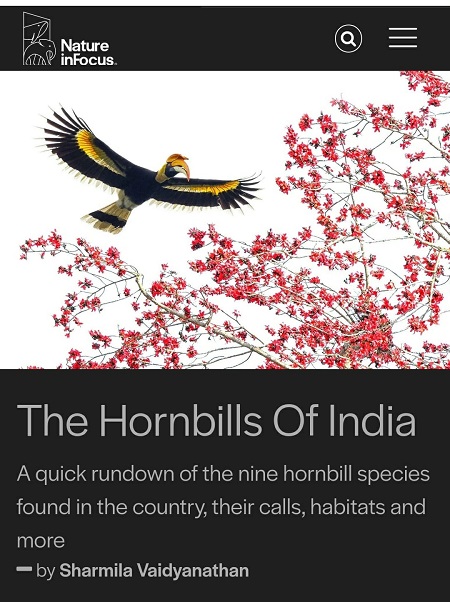A quick rundown of the nine hornbill species found in the country, their calls, habitats and more.
As published in Nature inFocus on 02 July, 2021. Read the full interview here.
Earlier this year, a video surfaced on Twitter showing two Indian Grey Hornbills perched on the railing of a balcony in an apartment complex in Mumbai, Maharashtra. The video, which went viral and was liked and shared widely, elicited mixed responses. While some people commented and asked about the name of the species, others seemed to be awed by the fact that such birds exist amidst the city’s sprawling urban jungle. Ironically, Indian Grey Hornbills are one of the most common resident hornbill species of the Indian subcontinent. Although they have managed to adapt to the urban landscape (they have also been observed to feed on discarded food), reactions to the video prove that awareness about hornbills, in general, is not that high.
Charismatic, enigmatic, rare; call them what you may, hornbills are truly some of the most captivating avians on the planet. Their distinct calls, disproportionately large beaks, long eyelashes, prominent casques, unique courtship rituals and the striking colours that some hornbill species exhibit make them a birdwatcher’s delight.
There are about 62 hornbill species world-over of which nine reside in India. It is difficult to estimate the number of hornbills in the country, but a citizen science initiative launched by the Nature Conservation Foundation (NCF) recorded about 938 hornbill sightings across India on their website as of February 2017. Hornbills play a vital role in forest regeneration and are therefore called ‘farmers of the forest’. They are omnivores, but they have a preference for fruits, particularly figs. “They are known to disperse seeds and aid in the regeneration of tropical trees by enabling the seeds to escape from competition with the parent plant and siblings, as well as from the predation of rodents, invertebrates and fungi that they would otherwise experience under the mother plant,” writes scientist Rohit Naniwadekar on the seed dispersal mechanisms of hornbills.
Head over to Nature inFocus for the full story.
